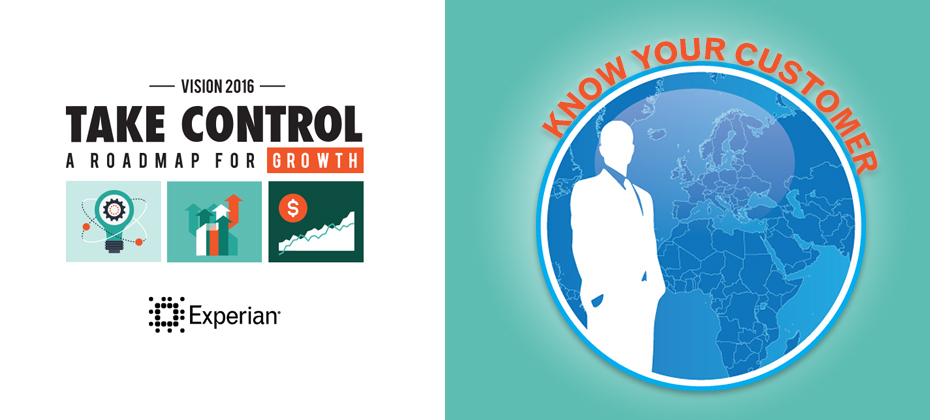At A Glance
It was popularised in the 1960s with the release of Letraset sheets containing Lorem Ipsum passages, and more recently with desktop publishing software like Aldus PageMaker including versions of Lorem Ipsum.Paragraph Block- is simply dummy text of the printing and typesetting industry. Lorem Ipsum has been the industry’s standard dummy text ever since the 1500s, when an unknown printer took a galley of type and scrambled it to make a type specimen book. It has survived not only five centuries, but also the leap into electronic typesetting, remaining essentially unchanged. It was popularised in the 1960s with the release of Letraset sheets containing Lorem Ipsum passages, and more recently with desktop publishing software like Aldus PageMaker including versions of Lorem Ipsum.


Heading 2
Heading 3
Heading 4
Heading 5
- This is a list
- Item 1
- Item 2
- Sub list
- Sub list 2
- Sub list 3
- More list
- More list 2
- More list 3
- More more
- More more
This is the pull quote block Lorem Ipsumis simply dummy text of the printing and typesetting industry. Lorem Ipsum has been the industry’s standard dummy text ever since the 1500s,
ExperianThis is the citation

This is the pull quote block Lorem Ipsumis simply dummy text of the printing and typesetting industry. Lorem Ipsum has been the industry’s standard dummy text ever since the 1500s,
ExperianThis is the citation
| Table element | Table element | Table element |
| my table | my table | my table |
| Table element | Table element | Table element |

Media Text Block
of the printing and typesetting industry. Lorem Ipsum has been the industry’s standard dummy text ever since the 1500s, when an unknown printer took a galley of type and scrambled it to make a type specimen book. It has survived not only five centuries, but also the leap into electronic typesetting, remaining essentially unchanged. It was popularised in the 1960s with the release of Letraset sheets containing Lorem Ipsum passages, and more recently with desktop publishing software like Aldus PageMaker including versions of Lorem Ipsum
My Small H5 Title


Television had its Twilight Zone, the Emmy-winning anthology series featuring tales rich in fantasy, morality and irony. Today's economy has its own Twilight Zone. It lies between the legitimate economy with its weekly paychecks, W2 forms and 401(K) plans, and the underground economy with its unreported, all-cash transactions. Call them "The Unbanked." Call them "The Credit Invisibles." Whatever label you choose, these men and women — who number in the millions – want access to credit, but can’t be easily accessed with traditional credit models, and they lack a smooth on-ramp to grow in the credit universe. How a Worker Becomes "Credit Invisible" America's "credit invisibles" tend to be minimum- or low-wage workers. They exist in virtually every industry, although they tend to be concentrated in agriculture, food service, construction and manufacturing. Some work full-time for a single employer, while others work part-time or on a gig-by-gig basis. The FDIC estimates some 10 million Americans currently fit the definition of unbanked, while an additional 28.4 million are underbanked. Instead of traditional banks, this population tends to use the services of private check-cashing services and payday lenders for their financial services, which is not always advantageous for the consumer with these services’ sizeable expenses and transaction fees. The Payroll Card Alternative Recognizing the perils inherent in the current system, a number of companies have developed solutions to help those individuals who cannot and will not establish traditional checking and savings accounts. SOLE® Financial, a financial services company headquartered in Portland, Ore, offers the SOLE Visa® Payroll Card, allowing employees to enjoy the benefits associated with direct deposit checking accounts without the costs and restrictions traditional banks often impose. "From a payroll standpoint, paycards function just like bank accounts,” explained Taylor Ellsworth, content marketing manager for SOLE Financial. “The transfer happens on the exact same timeline as the paychecks that employers deposit to traditional bank accounts.” Additionally, any bill from a vendor that accepts electronic payments – either online or with a card number over the phone – can accept payments from the SOLE paycard. "For bills like rent, which sometimes can only be paid with a check or money order, cardholders can log in and use the bill pay option for $1 per bill to have a check issued to their landlord — or any other recipient — from their account,” said Ellsworth. Helping Credit Invisibles Build Personal Credit Files Another way companies are helping credit invisibles become visible is by considering non-retail payments, such as payments to utility companies, as part of a personal payment history. Traditionally payments to gas, electric, telephone, cable and other household service providers are generally not being reported unless the consumer is severely delinquent and thus on-time payment history is not included in credit scores. Experian recently investigated how including payments to energy utilities could affect men and women with "thin-file" credit portfolios. The subprime and nonprime consumers in the study received the greatest positive score impact, with 95 percent of subprime consumers and 75 percent of nonprime consumers experiencing a positive score change. A resounding 82 percent of subprime consumers in the study received a positive score impact of 11 points or more. The average VantageScore® credit score change for all participants was an increase of 28 points. Experian concluded, "positive energy-utility reporting presents an opportunity for energy companies to play a key role in helping their consumers build credit history. The ability for many of these consumers to become credit-scoreable, build a more robust credit file and potentially migrate to a better risk segment simply by paying their energy bills on time each month is powerful and represents an opportunity for positive change that should be not overlooked." Conclusion With income inequality growing, there is an increasing pressure to find ways to improve the prospects of the tens of millions of Americans who live on the farthest edges of the American economy. New technologies and ways of looking at credit can offer the unbanked and the under-banked ways to improve their economic situation and move closer to the mainstream. By bringing these millions into the light, those who issue and evaluate credit will create millions of new customers who can, in turn, add new energy to the American economy.

This article first appeared in Baseline Magazine Since it is possible for cyber-criminals to create a synthetic person, businesses must be able to differentiate between synthetic and true-party identities. Children often make up imaginary friends and have a way of making them come to life. They may come over to play, go on vacation with you and have sleepover parties. As a parent, you know they don’t really exist, but you play along anyway. Think of synthetic identities like imaginary friends. Unfortunately, some criminals create imaginary identities for nefarious reasons, so the innocence associated with imaginary friends is quickly lost. Fraudsters combine and manipulate real consumer data with fictitious demographic information to create a “new” or “synthetic” individual. Once the synthetic person is “born,” fraudsters create a financial life and social history that mirrors true-party behaviors. The similarities in financial activities make it difficult to detect good from bad and real from synthetic. There really is no difference in the world of automated transaction processing between you and a synthetic identity. Often the synthetic “person” is viewed as a thin or shallow file consumer— perhaps a millennial. I have a hard time remembering all of my own passwords, so how do organized “synthetic schemes” keep all the information usable and together across hundreds of accounts? Our data scientists have found that information is often shared from identity to identity and account to account. For instance, perhaps synthetic criminals are using the same or similar passwords or email addresses across products and accounts in your portfolio. Or, perhaps physical address and phone records have cross-functional similarities. The algorithms and sciences are much more complex, but this simplifies how we are able to link data, analytics, strategies and scores. Identifying the Business Impact of Synthetic-Identity Fraud Most industry professionals look at synthetic-identity fraud as a relatively new fraud threat. The real risk runs much deeper in an organization than just operational expense and fraud loss dollars. Does your fraud strategy include looking at all types of risk, compliance reporting, and how processes affect the customer experience? To identify the overall impact synthetic identities can have on your institution, you should start asking: Are you truly complying with "Know Your Customer" (KYC) regulations when a synthetic account exists in your active portfolio? Does your written "Customer Identification Program" (CIP) include or exclude synthetic identities? Should you be reporting this suspicious activity to the compliance officer (or department) and submitting a suspicious activity report (SAR)? Should you charge off synthetic accounts as credit or fraud losses? Which department should be the owner of suspected synthetic accounts: Credit Risk, Collections or Fraud? Do you have run any anti-money laundering (AML) risk when participating in money movements and transfers? Depending on your answers to the above questions, you may be incurring potential risks in the policies and procedures of synthetic identity treatment, operational readiness and training practices. Since it is possible to create a synthetic person, businesses must be able to differentiate between synthetic and true-party identities, just as parents need to differentiate between their child's real and imaginary friends.

Businesses are looking to international markets to fuel growth, but meeting regulatory requirements across the globe poses significant challenges. Changes in Anti-Money Laundering (AML) and Know Your Customer (KYC) requirements are evolving at break-neck speed. In the past few years, financial institutions and corporations have incurred billions of dollars in fines, reputation damage, and even the possibility of criminal prosecution for not enforcing adequate regulatory controls. KPMG found that 70 percent of its respondents had received a regulatory visit within the past year focused on KYC and total investment in AML had increased by an average rate of 53 percent. As large as this additional investment may seem, there may be an even bigger cost to doing regulatory compliance the right way. For many businesses the customer experience is the biggest casualty of implementing a robust KYC program. In their Vision 2016 breakout session “Know your customer, meeting commercial requirements in a global marketplace,” Greg Carmean, Experian senior product manager, will be joined by Adel Shrufi, software development manager at Amazon Transaction Risk Management Systems. They will discuss: • How to streamline compliance to optimize the client experience • How to evaluate and select the best vendors to reduce compliance costs and operational vulnerabilities • What businesses need to consider to ensure successful launches in new international markets Watch our session preview video below: We’ll look forward to seeing you as we provide a road map for growth at this year’s Vision conference.
In this article…
typesetting, remaining essentially unchanged. It was popularised in the 1960s with the release of Letraset sheets containing Lorem Ipsum passages, and more recently with desktop publishing software like Aldus PageMaker including versions of Lorem Ipsum.


